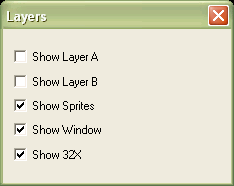


*Kega Fusion (it has a built-in AVI recorder *A mainstream emulator like Kega Fusion or DGen (or what works best for you) Coupled with the lack of clearly defined layers in the Genesis, this makes layer ripping impractical due to many sprite outlines being in full black like the delayered background. This gave me an idea.Īs anyone that's tried ripping Genesis sprites knows, Genesis programmers loved using full black instead of off-black, which Nintendo I guess encouraged. However, some sprites were actually preloaded, such as the helicopters' rotors and background tiles (the land ones). What you see on the screen is what you get in the tiles, basically.

I was hoping it would be cut and dry like the GeGeGe no Kitarou game on the SNES which so handily preloaded sprites. The rendering might be slow on lower-end computer but not too much for those who have i3 or above.Īnd there you have it, HD on Kega Fusion.********************* TheouAegis' Useful Genesis Ripping Tip *********************Īlright, well, this morning I decided to try using a tile viewer to rip Urban Strike. This will output file at constant rate factor of 17, yuv444 color space, and five times the resolution of the Sega Genesis/Mega Drive. Usually, I'll just do multiple the original video resolution by five. Also change the resolution to maintain your video aspect ratio. Oh and yeah, if you haven't installed Kega Fusion's codec already, just go to your Kega Fusion installation folder and then open the Video Codec folder, right click on KegaGameVideo.inf (setup information) and then click install.įourth, Go back to the Command Prompt window, then copy and paste this:įfmpeg -i E:\Kega Fusion\input.mp4 -vf scale=1600x1120:flags=lanczos -c:v libx264 -profile:v high444 -pix_fmt yuv444p -c:a copy -preset slow -crf 17 output_HD.movĬhange the input name and location depending on where exactly you put your video file. Minimize the command prompt, then do some recordings Kega Fusion, I assume you already knew how to do it so I skipped this part. If it's on another partition, type in partition name first. Then type in where your FFMPEG binaries are located.


 0 kommentar(er)
0 kommentar(er)
